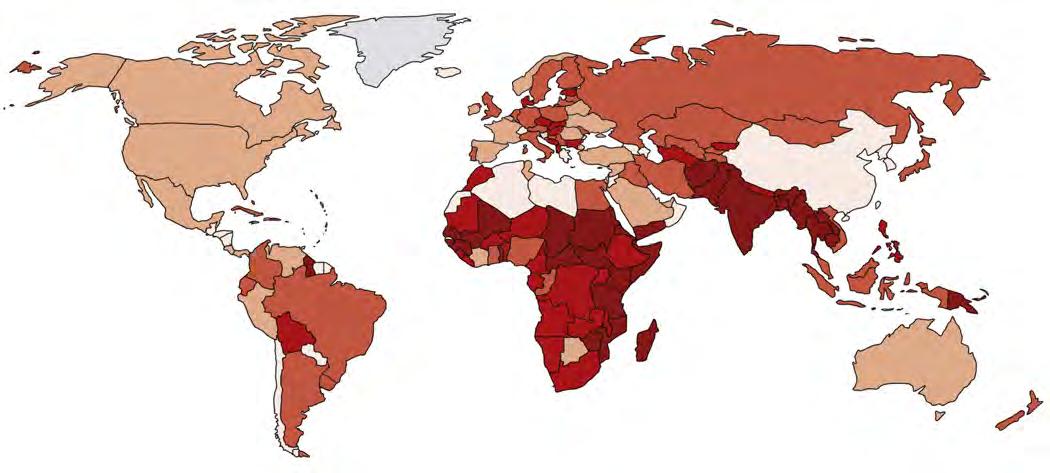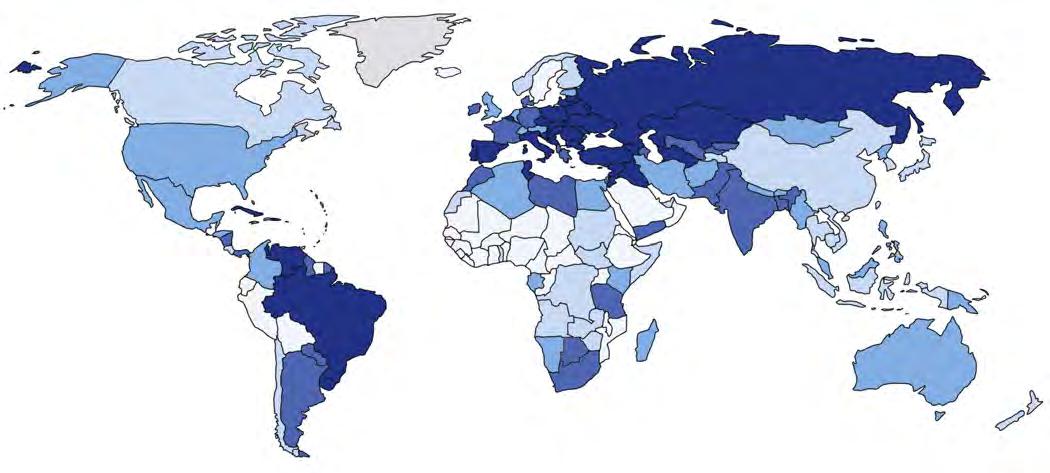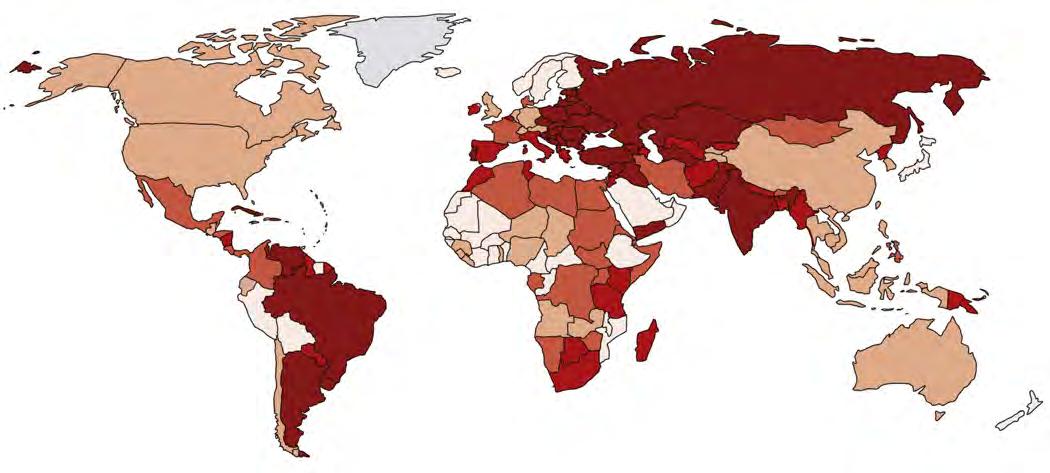
https://ebookmass.com/product/oral-head-and-neck-oncology-
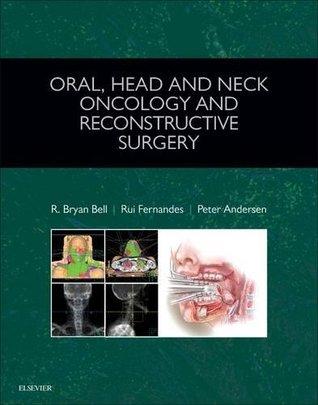
Instant digital products (PDF, ePub, MOBI) ready for you
Download now and discover formats that fit your needs...
Essential Cases in Head and Neck Oncology 1st Edition Babak Givi
https://ebookmass.com/product/essential-cases-in-head-and-neckoncology-1st-edition-babak-givi/
ebookmass.com
Imaging Anatomy: Head and Neck 1st Edition Philip R. Chapman
https://ebookmass.com/product/imaging-anatomy-head-and-neck-1stedition-philip-r-chapman/
ebookmass.com
Plastic Surgery-Craniofacial, Head and Neck SurgeryPediatric Plastic Surgery 4th Edition Geoffrey C. Gurtner
https://ebookmass.com/product/plastic-surgery-craniofacial-head-andneck-surgery-pediatric-plastic-surgery-4th-edition-geoffrey-c-gurtner/
ebookmass.com
Pearson Edexcel A-level Politics Student Guide 2: Government and Politics of the USA and Comparative Politics 2nd Edition Sarra Jenkins
https://ebookmass.com/product/pearson-edexcel-a-level-politicsstudent-guide-2-government-and-politics-of-the-usa-and-comparativepolitics-2nd-edition-sarra-jenkins/
ebookmass.com


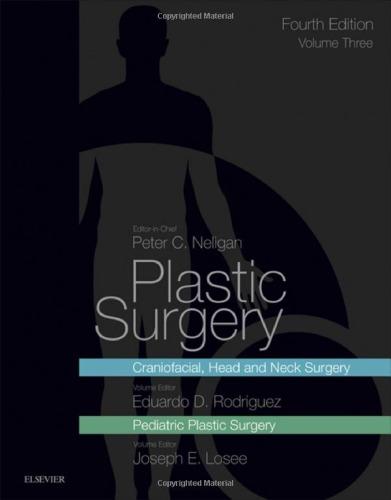

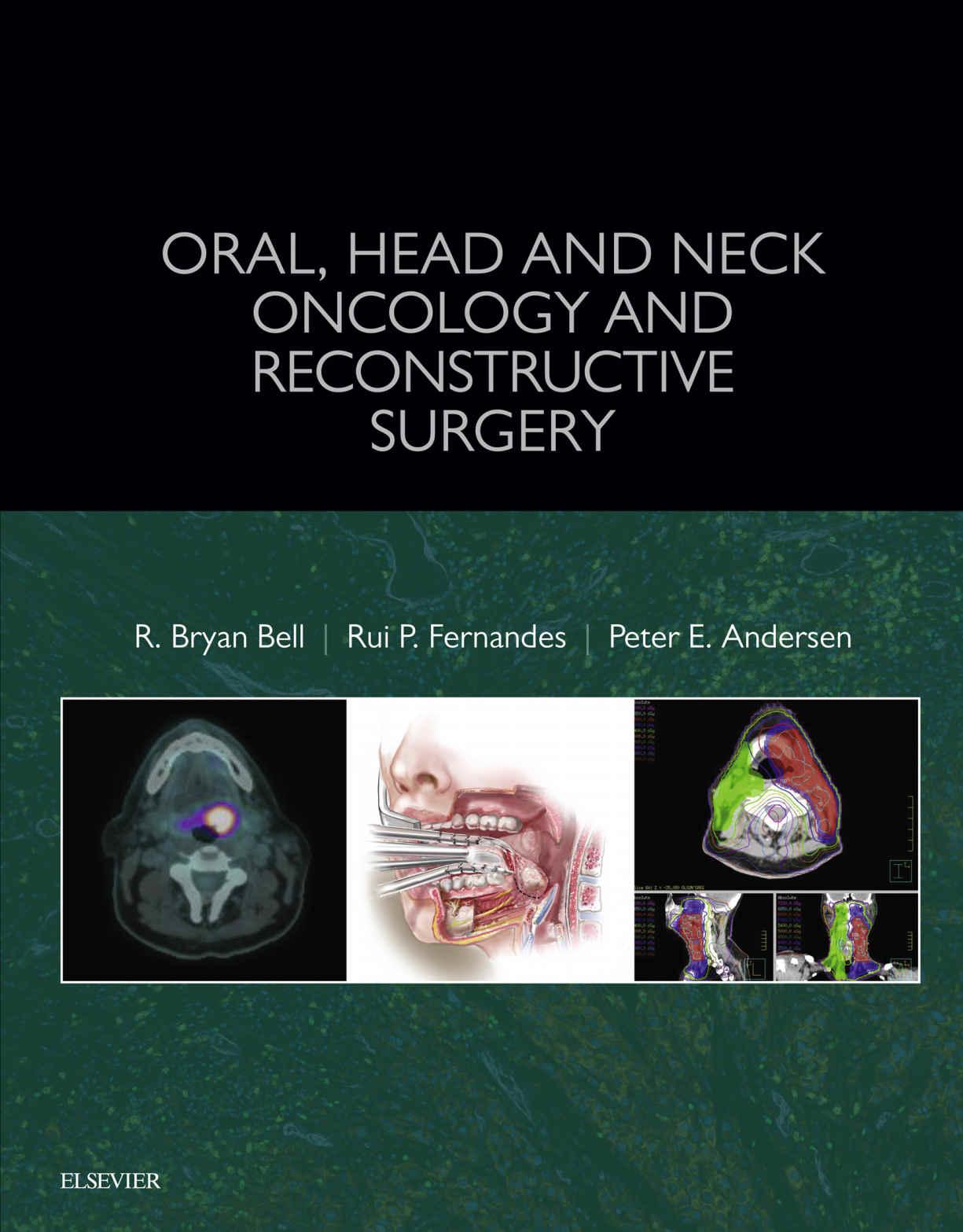
3251 Riverport Lane
St. Louis, Missouri 63043
ORAL, HEAD AND NECK ONCOLOGY AND RECONSTRUCTIVE SURGERY ISBN: 978-0-323-26568-3
Copyright © 2018 by Elsevier, Inc. All rights reserved.
No part of this publication may be reproduced or transmitted in any form or by any means, electronic or mechanical, including photocopying, recording, or any information storage and retrieval system, without permission in writing from the publisher. Details on how to seek permission, further information about the Publisher’s permissions policies and our arrangements with organizations such as the Copyright Clearance Center and the Copyright Licensing Agency, can be found at our website: www.elsevier.com/permissions.
This book and the individual contributions contained in it are protected under copyright by the Publisher (other than as may be noted herein).
Notices
Practitioners and researchers must always rely on their own experience and knowledge in evaluating and using any information, methods, compounds or experiments described herein. Because of rapid advances in the medical sciences, in particular, independent verification of diagnoses and drug dosages should be made. To the fullest extent of the law, no responsibility is assumed by Elsevier, authors, editors or contributors for any injury and/or damage to persons or property as a matter of products liability, negligence or otherwise, or from any use or operation of any methods, products, instructions, or ideas contained in the material herein.
Library of Congress Cataloging-in-Publication Data
Names: Bell, R. Bryan, editor. | Fernandes, Rui P., editor. | Andersen, Peter E., editor.
Title: Oral, head and neck oncology and reconstructive surgery / [edited by]
R. Bryan Bell, Rui P. Fernandes, Peter E. Andersen.
Description: St. Louis, Missouri : Elsevier, [2018] | Includes bibliographical references and index.
Identifiers: LCCN 2017023583 | ISBN 9780323265683 (hardcover : alk. paper)
Subjects: | MESH: Head and Neck Neoplasms--surgery | Mouth Neoplasms--surgery | Reconstructive Surgical Procedures--methods
Classification: LCC RF51 | NLM WE 707 | DDC 617.5/1059--dc23 LC record available at https://lccn.loc.gov/2017023583
Director, Content Development: Teri Hines-Burnham
Senior Content Strategist: Jennifer Flynn-Briggs
Publishing Services Manager: Julie Eddy
Senior Project Manager: Mary Stueck
Design Direction: Miles Hitchen
Sandeep Bhuta, MBBS, DMRD, DNB, FRANZCR
Neuroradiologist
Chief of Neuroradiology and Head and Neck Imaging
Department of Medical Imaging
Gold Coast University Hospital
Southport, Queensland, Australia
Chapter 44: Aggressive Non-melanoma Skin Cancer
Carlo B. Bifulco, MD
Medical Director of Oncologic Molecular Pathology and Pathology Informatics
Director of Translational Molecular Pathology
Robert W. Franz Cancer Research Center in the Earle A. Chiles Research Institute at Providence Cancer Center
Providence Health and Services
Portland, Oregon
Chapter 2: Cellular and Molecular Pathology
Chapter 15: Immunotherapy
Gido Bittermann, MD, DMD
Senior Physician
Center of Dental Medicine
Department of Oral and Maxillofacial Surgery and Regional Plastic Surgery
University Medical Center
Freiburg, Germany
Chapter 8: Intraoperative Navigation
Keith E. Blackwell, MD
Professor
Section Chief of Facial Plastic and Reconstructive Surgery
Department of Head and Neck Surgery
David Geffen School of Medicine at University of California–Los Angeles
Los Angeles, California
Chapter 10: Microvascular Surgery
Angel Blanco, MD
Director of Radiation Oncology
Memorial Hermann Cancer Center TMC
Houston, Texas
Chapter 25: Early Buccal Mucosa Cancer
Alexander M. Bobinskas, BSc, MBBS, B Oral Health (Dental Science), Grad Dip Dentistry, MPhil, FRACDS(OMS), FRCS(OMFS)
Oral and Maxillofacial Surgeon
Maxillofacial Surgery Department
Gold Coast University Hospital
Southport, Queensland, Australia
Chapter 44: Aggressive Non-melanoma Skin Cancer
Caroline Brammer, MBChB(Sheff), MRCP, FRCR
Consultant, Clinical Oncology
The Clatterbridge Cancer Centre–Aintree
Liverpool, United Kingdom
Chapter 29: Advanced Palatomaxillary Cancer (Special Considerations Related to Reconstruction)
Lawrence E. Brecht, DDS
Director of Maxillofacial Prosthetics
Jonathan and Maxine Ferencz Postgraduate Program in Prosthodontics
College of Dentistry
New York University;
Director of Dental Services and Craniofacial Prosthetics
Hanjörg Wyss Department of Plastic Surgery
Langone Medical Center
New York University;
Institute of Reconstructive Plastic Surgery
New York, New York
Chapter 7: Virtual Surgical Planning
James Brown, MD, FRCs, FDSRCS
Consultant, Maxillofacial and Head and Neck Surgeon
Head and Neck Directorate
Aintree University Hospital;
Consultant, Oral and Maxillofacial Surgeon
Aintree University Hospital and Warrington Hospital
Professor of Head and Neck Surgery
Liverpool University
Liverpool, United Kingdom
Chapter 29: Advanced Palatomaxillary Cancer (Special Considerations Related to Reconstruction)
Chris J. Butterworth, BDS(Hons), MPhil, FDSRCS, FDS(Rest), RCS
Consultant, Oral Rehabilitation and Maxillofacial Prosthodontics
Head and Neck Directorate
Aintree University Hospital;
Hon Senior Lecturer in Maxillofacial Prosthodontics
Department of Molecular and Clinical Cancer Medicine
University of Liverpool
Liverpool, United Kingdom
Chapter 29: Advanced Palatomaxillary Cancer (Special Considerations Related to Reconstruction)
Eric R. Carlson, DMD, MD, FACS
Professor and Kelly L. Krahwinkel Chair
Director of Oral and Maxillofacial Surgery Residency Program
Department of Oral and Maxillofacial Surgery
University of Tennessee Medical Center; Director of Oral/Head and Neck Oncologic Surgery
Fellowship Program
University of Tennessee Cancer Institute
Knoxville, Tennessee
Chapter 31: Lip Cancer
Keith A. Chadwick, MD
Resident Physician
Department of Otolaryngology–Head and Neck Surgery
Oregon Health and Science University
Portland, Oregon
Chapter 39: Early Glottic Larynx Cancer
Srinivasa R. Chandra, MD, BDS, FDSRCS
Assistant Professor
Department of Maxillofacial–Head and Neck Oncologic and Reconstructive Microvascular Surgery
University of Washington
Seattle, Washington
Chapter 27: Early Palatomaxillary Cancer
Allen Cheng, MD, DDS
Medical Director
Oral, Head and Neck Cancer Program
Legacy Good Samaritan Medical Center
Legacy Health;
Section Chair
Oral and Maxillofacial Surgery
Legacy Emanuel Medical Center; Attending Surgeon
Providence Oral, Head and Neck Cancer Program
Providence Portland Medical Center; Consultant
The Head and Neck Institute
Head and Neck Surgical Associates
Portland, Oregon
Chapter 12: Maxillofacial Reconstruction and Prosthetic Rehabilitation
Chapter 24: Advanced Oromandibular Cancer
Chapter 33: Early HPV-Related Base of Tongue Cancer
Chapter 35: Advanced HPV-Unrelated Pharynx Cancer
Scott Claiborne, DDS, MD
Fellow in Oral/Head and Neck Oncology and Reconstructive Surgery
North Memorial Medical Center
Minneapolis, Minnesota
Chapter 21: Early Floor of Mouth Cancer
Daniel R. Clayburgh, MD, PhD, FACS
Assistant Professor
Otolaryngology–Head and Neck Surgery
Oregon Health and Science University
Portland, Oregon
Chapter 3: Molecular Biology
Chapter 40: Advanced Larynx Cancer
Chapter 41: Subglottic Larynx Cancer
Marka R. Crittenden, MD, PhD
Radiation Oncologist
Director of Translational Radiation Research
Providence Health and Services
Robert W. Franz Cancer Research Center in the Earle A. Chiles Research Institute at Providence Cancer Center
Portland, Oregon
Chapter 33: Early HPV-Related Base of Tongue Cancer
Brendan D. Curti, MD
Director of Biotherapy and Genitourinary Oncology Research
Earle A. Chiles Research Institute
Providence Cancer Center
Portland, Oregon
Chapter 43: Melanoma
Derfel ap Dafydd, BSc, MBBCh, MRCP, FRCR
Consultant, Radiologist
Imaging Department
The Royal Marsden NHS Foundation Trust
London, England
Chapter 42: Major Salivary Gland Cancer
Roi Dagan, MD, MS
Assistant Professor
Department of Radiation Oncology
University of Florida College of Medicine
University of Florida Health Proton Therapy Institute
Jacksonville, Florida
Chapter 20: Advanced Tongue Cancer (Special Considerations Requiring Total Glossectomy)
Chapter 30: Advanced Palatomaxillary Cancer (Special Considerations Related to Nasal Involvement)
Camilla Dawson, BSC (Hons), MRCSLT, HCPC
Clinical Lead Speech and Language Therapist
Queen Elizabeth Hospital Birmingham
Birmingham, United Kingdom
Chapter 36: Soft Palate Cancer
Eric J. Dierks, MD, DMD
Director of Fellowship in Head and Neck Oncologic and Microvascular Reconstructive Surgery
The Head and Neck Institute
Head and Neck Surgical Associates; Attending Surgeon
Oral, Head and Neck Cancer Program
Legacy Good Samaritan Medical Center
Legacy Health; Attending Surgeon
Providence Oral, Head and Neck Cancer Program; Affiliate Professor
Oral and Maxillofacial Surgery
Oregon Health and Science University
Portland, Oregon
Chapter 12: Maxillofacial Reconstruction and Prosthetic Rehabilitation
Chapter 35: Advanced HPV-Unrelated Pharynx Cancer
Jasjit K. Dillon, DDs, MBBS, FDSRCS, FACS
Clinical Associate Professor and Program Director
Oral and Maxillofacial Surgery
University of Washington
Seattle, Washington
Chapter 27: Early Palatomaxillary Cancer
Donita Dyalram, DDS, MD, FACS
Assistant Professor
Associate Program Director/Associate Fellowship Director
Department of Oral and Maxillofacial Surgery
University of Maryland Medical Center
Baltimore, Maryland
Chapter 18: Early Tongue Cancer
Sean P. Edwards, DDS, MD
Clinical Associate Professor
Director, Residency Program
Chief, Pediatric Oral and Maxillofacial Surgery
Department of Oral and Maxillofacial Surgery/Hospital Dentistry
University of Michigan Health System
Ann Arbor, Michigan
Chapter 28: Advanced Palatomaxillary Cancer
David A. Elliott, MD
Assistant Professor Radiation Oncology
University of Toledo Medical Center
Toledo, Ohio
Chapter 13: Radiation Therapy
Chapter 40: Advanced Larynx Cancer
Chapter 41: Subglottic Larynx Cancer
Mererid Evans, PhD, FRCR
Consultant, Clinical Oncologist
Velindre Cancer Centre
Cardiff, Wales, United Kingdom
Chapter 38: Advanced Supraglottic Larynx Cancer
Adam P. Fagin, DMD, MD
Resident
Department of Oral and Maxillofacial Surgery
Oregon Health and Science University
Portland, Oregon
Chapter 26: Advanced Buccal Mucosa Cancer
Carole Fakhry, MD, MPH
Associate Professor of Otolaryngology-Head and Neck Surgery
Johns Hopkins University School of Medicine
Baltimore, Maryland
Chapter 1: Epidemiology
Mark B. Faries, MD, FACS
Professor of Surgery
Director of Donald L. Morton Melanoma Research Program
John Wayne Cancer Institute
Santa Monica, California
Chapter 43: Melanoma
Zipei Feng, PhD
Department of Cell, Developmental and Cancer Biology
Oregon Health and Science University
Portland, Oregon
Chapter 15: Immunotherapy
Rui P. Fernandes, MD, DMD, FACS
Associate Professor
Departments of Oral and Maxillofacial Surgery and Neurosurgery;
Chief, Division of Head Neck Surgery
Director of Head and Neck Oncologic Surgery and Microvascular Reconstructive Fellowship
University of Florida College of Medicine Jacksonville
Jacksonville, Florida
Chapter 20: Advanced Tongue Cancer (Special Considerations Requiring Total Glossectomy)
Chapter 30: Advanced Palatomaxillary Cancer (Special Considerations Related to Nasal Involvement)
Jay K. Ferrell, MD
Resident Physician
Otorhinolaryngology—Head and Neck Surgery
University of Texas Health Science Center at Houston School of Medicine
Houston, Texas
Chapter 32: Early HPV-Related Tonsil Cancer
Bernard A. Fox, PhD
Harder Family Endowed Chair for Cancer Research
Chief of Laboratory of Molecular and Tumor Immunology
Robert W. Franz Cancer Research Center
Earle A. Chiles Research Institute
Providence Cancer Center, Knight Cancer Institute
Department of Molecular and Immunology
Oregon Health and Science University
Portland, Oregon
Chapter 15: Immunotherapy
Clifton D. Fuller, MD, PhD
Assistant Professor
Department of Radiation Oncology
Division of Radiation Oncology
The University of Texas MD Anderson Cancer Center
Houston, Texas
Chapter 32: Early HPV-Related Tonsil Cancer
G.E. Ghali, DDS, MD, FACS, FRCS(Ed)
Gamble Professor and Chairman
Department of Oral and Maxillofacial Surgery
Louisiana State University Health Sciences Center
Shreveport, Louisiana
Chapter 19: Advanced Tongue Cancer
John P. Gleysteen, MD
Assistant Professor
Department of Otolaryngology
University of Tennessee Health Science Center
Memphis, Tennessee
Chapter 40: Advanced Larynx Cancer
Kathryn A. Gold, MD
Associate Professor
Moores Cancer Center
University of California San Diego
La Jolla, California
Chapter 32: Early HPV−Related Tonsil Cancer
James Good, MSc, MD, PhD
Consultant, Oncologist
Queen Elizabeth Hospital
Birmingham, United Kingdom
Chapter 36: Soft Palate Cancer
Jennifer R. Grandis, MD
American Cancer Society Professor
Associate Vice Chancellor
Clinical and Translational Research Director
Professor Otolaryngology—Head and Neck Surgery
University of California
San Francisco, California
Chapter 3: Molecular Biology
Donna J. Graville, PhD, CCC-SLP
Associate Professor Director of NW Center for Voice and Swallowing Otolaryngology/Head and Neck Surgery
Oregon Health and Science University
Portland, Oregon
Chapter 17: Speech Pathology and Rehabilitation
Neil D. Gross, MD, FACS
Associate Professor
Director of Clinical Research
Head and Neck Surgery
University of Texas MD Anderson Cancer Center
Houston, Texas
Chapter 32: Early HPV-Related Tonsil Cancer
Aaron Grossberg, MD, PhD
Clinical Resident
Department of Radiation Oncology
University of Texas MD Anderson Cancer Center
Houston, Texas
Chapter 32: Early HPV-Related Tonsil Cancer
Shan Guo, MD
Assistant Professor Division of Oncology
Department of Internal Medicine
University of Texas Health Science Center at Houston
Houston, Texas
Chapter 25: Early Buccal Mucosa Cancer
Bronwyn Hamilton, MD
Associate Professor of Radiology
Radiology Department
Oregon Health and Science University
Portland, Oregon;
Adjunct Assistant Professor of Radiology
Radiology Department
University of Utah
Salt Lake City, Utah
Chapter 5: Diagnostic Imaging
Eric K. Hansen, MD
Radiation Oncology
Oregon Clinic
Providence St. Vincent Medical Center
Portland, Oregon
Chapter 13: Radiation Therapy
Heidi J. Hansen, DMD, DABOM
Assistant Professor of Surgery
Division of Dentistry, Oral and Maxillofacial Surgery
Weill Cornell Medicine
New York, New York
Chapter 16: Oral/Dental Oncology
Bruce H. Haughey, MD, FACS
Otolaryngology
Florida ENT Surgical Specialists
Celebration, Florida
Chapter 4: Oncoviruses
Richard E. Hayden, MD, FACS, FRCS(C)
Professor
Department of Otolaryngology–Head and Neck Surgery
Mayo Clinic Arizona
Phoenix, Arizona
Chapter 37: Early Supraglottic Larynx Cancer
Joseph I. Helman, DMD
C.J. Lyons Endowed Professor
Oral and Maxillofacial Surgery
University of Michigan
Ann Arbor, Michigan
Chapter 28: Advanced Palatomaxillary Cancer
David L. Hirsch, MD, DDS, FACS
Clinical Assistant Professor
Oral and Maxillofacial Surgery
College of Dentistry
New York University
New York, New York
Chapter 7: Virtual Surgical Planning
John M. Holland, MD
Associate Professor
Radiation Oncology
Oregon Health and Science University
Portland, Oregon
Chapter 13: Radiation Therapy
Chapter 41: Subglottic Larynx Cancer
Katherine A. Hutcheson, PhD
Associate Professor
Department of Head and Neck Surgery
Section of Speech Pathology and Audiology
University of Texas MD Anderson Cancer Center
Houston, Texas
Chapter 32: Early HPV-Related Tonsil Cancer
Megan J. Hyers, MS, CCC-SLP, BCS-S
Speech-Language Pathologist
Providence Health and Services
Portland, Oregon
Chapter 24: Advanced Oromandibular Cancer
Chapter 33: Early HPV-Related Base of Tongue Cancer
Chapter 35: Advanced HPV-Unrelated Pharynx Cancer
Matthew Idle, MD
Specialist Registrar
Oral and Maxillofacial Surgery
West Midlands Deanery and Queen Elizabeth Hospital
Birmingham, United Kingdom
Chapter 36: Soft Palate Cancer
James E. Jackson, MBBS, FRANZCR
Radiation Oncologist
Radiation Oncology Centres
Gold Coast University Hospital
Southport, Queensland, Australia
Chapter 44: Aggressive Non-melanoma Skin Cancer
Scharukh Jalisi, MD, FACS, MA
Associate Professor
Director of Head and Neck Cancer Center of Excellence
Department of Otolaryngology–Head and Neck Surgery
Department of Neurosurgery
Director of Division of Head and Neck Surgical Oncology and Skullbase Surgery
Boston University
Boston Medical Center
Boston, Massachusetts
Chapter 22: Advanced Floor of Mouth Cancer
Newell W. Johnson, PhD, MDSc, FDSRCS, FRCPath, FMedSci
Professor Emeritus
Menzies Health Institute–Queensland
Griffith University
Gold Coast, Queensland, Australia
Chapter 1: Epidemiology
Terry M. Jones, BSc, FRCSEd, FRCS(ORL-HNS), MD, SFHEA, FASE(RCS)
Professor of Head and Neck Surgery
Cancer Lead, NIHR CRN NWC
Editor-in-Chief of Clinical Otolaryngology
NWCR Centre
Department of Molecular and Clinical Cancer Medicine
University of Liverpool;
Honorary Consultant, Otolaryngologist/Head and Neck Surgeon
Aintree University Hospitals NHS Foundation Trust
Liverpool, United Kingdom
Chapter 38: Advanced Supraglottic Larynx Cancer
Deepak Kademani, DMD, MD, FACS
Associate Professor
Oral and Maxillofacial Surgery
University of Minnesota; Chief of Surgery
North Memorial Medical Center
Minneapolis, Minnesota
Chapter 21: Early Floor of Mouth Cancer
Joseph R. Kelley, MD, PhD
Radiation Oncology
University of Tennessee Medical Center
Knoxville, Tennessee
Chapter 31: Lip Cancer
Cyrus Kerawala, BDS, MBBS, FDSRCS, FRCS
Consultant, Maxillofacial/Head and Neck Surgeon
The Royal Marsden Hospital
London, United Kingdom
Chapter 42: Major Salivary Gland Cancer
Dongsoo David Kim, DMD, MD, FACS
Associate Professor
Edward and Freda Green Endowed Professor
Chief of Division of Head and Neck Oncology and Reconstructive Surgery
Department of Oral and Maxillofacial/Head and Neck Surgery
Louisiana State University Health Sciences Center–Shreveport
Shreveport, Louisiana
Chapter 19: Advanced Tongue Cancer
Tamar A. Kotz, MS, CCC-SLP
Senior Head and Neck Speech and Swallow Pathologist
Department of Otolaryngology–Head and Neck Surgery
Icahn School of Medicine at Mount Sinai
Mount Sinai Medical Center
New York, New York
Chapter 34: Advanced HPV-Related Oropharynx Cancer
Marc C. Metzger, MD, DMD, PhD
Chief Senior Physician
Center of Dental Medicine
Department of Oral and Maxillofacial Surgery and Regional Plastic Surgery
University Medical Center
Freiburg, Germany
Chapter 8: Intraoperative Navigation
Brett A. Miles, DDS, MD, FACS
Associate Professor
Otolaryngology/Head and Neck Surgery
Mount Sinai School of Medicine
New York, New York
Chapter 34: Advanced HPV-Related Oropharynx Cancer
Krzysztof J. Misiukiewicz, MD
Associate Professor
Medicine, Hematology and Medical Oncology; Assistant Professor Otolaryngology
Icahn School of Medicine at Mount Sinai
Mount Sinai Medical Center
New York, New York
Chapter 34: Advanced HPV-Related Oropharynx Cancer
Abdallah S. R. Mohamed, MD, MSc
Research Scientist
Department of Radiation Oncology
University of Texas MD Anderson Cancer Center
Houston, Texas;
Assistant Lecturer
Department of Clinical Oncology and Nuclear Medicine
Faculty of Medicine University of Alexandria Alexandria, Egypt
Chapter 32: Early HPV-Related Tonsil Cancer
Casian Monaco, MD
Chief Resident
Hansjörg Wyss Department of Plastic Surgery
New York University Langone Medical Center
New York, New York
Chapter 7: Virtual Surgical Planning
James Murphy, BDS, MB, BCh, MFDS, MRCS, FFD
Attending Physician
Division of Oral and Maxillofacial Surgery
John H. Stroger, Jr. Hospital of Cook County Chicago, Illinois
Chapter 28: Advanced Palatomaxillary Cancer
Nima Nabavizadeh, MD
Clinical Instructor and Chief Resident
Radiation Medicine
Oregon Health and Science University
Portland, Oregon
Chapter 13: Radiation Therapy
Mohammed Nadershah, MD, BDS, MSc
Assistant Professor
Oral and Maxillofacial Surgery
King Abdulaziz University—Faculty of Dentistry
Jeddah, Saudi Arabia
Chapter 22: Advanced Floor of Mouth Cancer
Thomas H. Nagel, MD
Assistant Professor
Department of Otolaryngology–Head and Neck Surgery
Mayo Clinic Arizona Phoenix, Arizona
Chapter 37: Early Supraglottic Larynx Cancer
Kate Newbold, MB, ChB, MRCP, FRCR, FRCPE Consultant, Clinical Oncologist
The Royal Marsden NHS Foundation Trust London, England
Chapter 42: Major Salivary Gland Cancer
Dimitrios Nikolarakos, MBBS, BDSc, FRCS Eng, FRACDS Medical Director Maxillofacial Unit
Gold Coast University Hospital
Southport, Queensland, Australia
Chapter 44: Aggressive Non-Melanoma Skin Cancer
Kurt Nisi, MD, MBA Director
North Radiation Therapy Center Robbinsdale, Minnesota
Chapter 21: Early Floor of Mouth Cancer
Robert A. Ord, BDS, MB, BCh(Hons), FRCS, FACS, MS, MBA
Professor and Chairman
Department of Oral and Maxillofacial Surgery; Professor Oncology Program Greenbaum Cancer Center University of Maryland Baltimore, Maryland
Chapter 18: Early Tongue Cancer
Larry M. Over, DMD, MSD, LLC Private Practice Eugene, Oregon
Chapter 12: Maxillofacial Reconstruction and Prosthetic Rehabilitation
Chapter 24: Advanced Oromandibular Cancer
Sara I. Pai, MD, PhD, FACS Associate Professor
Massachusetts General Hospital Cancer Center
Harvard Medical School Boston, Massachusetts
Chapter 4: Oncoviruses
Brent B. Ward, DDS, MD
Associate Professor and Fellowship Program Director
Oral and Maxillofacial Surgery
University of Michigan
Ann Arbor, Michigan
Chapter 28: Advanced Palatomaxillary Cancer
Amber L. Watters, DDS, MPH, FSCD
Director of Oral Oncology
Providence Oral Oncology and Oral Medicine Clinic
Oral, Head and Neck Cancer Program
Providence Cancer Center
Portland, Oregon
Chapter 16: Oral/Dental Oncology
Chapter 33: Early HPV-Related Base of Tongue Cancer
Chapter 35: Advanced HPV-Unrelated Pharynx Cancer
Mark K. Wax, MD, FACS, FRCS(C)
Professor Otolaryngology—Oral and Maxillofacial Surgery
Program Director Otolaryngology
Fellowship Director of Facial Plastic and Reconstructive Surgery, AAFPRS
Director Microvascular Reconstruction
Coordinator Annual Program AAOHNSF
Oregon Health and Science University
Portland, Oregon
Chapter 26: Advanced Buccal Mucosa Cancer
Richard M. Webster, BM, FRCR, PhD
Consultant, Clinical Oncologist
Velindre Cancer Centre
Cardiff, Wales, United Kingdom
Chapter 38: Advanced Supraglottic Larynx Cancer
Andrew Weinberg, PhD
Judith A. Hartmann Endowed Chair for Cancer Research
Member and Chief of Laboratory of Basic Immunology
Earle A. Chiles Research Institute
Providence Cancer Center
Portland, Oregon
Chapter 15: Immunotherapy
Hong D. Xiao, MD, PhD
Pathologist and Head and Neck Pathology Lead Department of Pathology
Providence Health and Services
Portland, Oregon
Chapter 2: Cellular and Molecular Pathology
Yavuz Yildirim, DDS, MD
Resident
Division of Oral and Maxillofacial Surgery
Department of Surgery
Mayo Clinic
Rochester, Minnesota
Chapter 23: Early Oromandibular Cancer
Yedeh Ying, DMD, MD Formerly, Fellow in Head and Neck Oncologic and Microvascular Reconstructive Surgery
Providence Cancer Center at Providence Portland Medical Center
Chapter 24: Advanced Oromandibular Cancer




